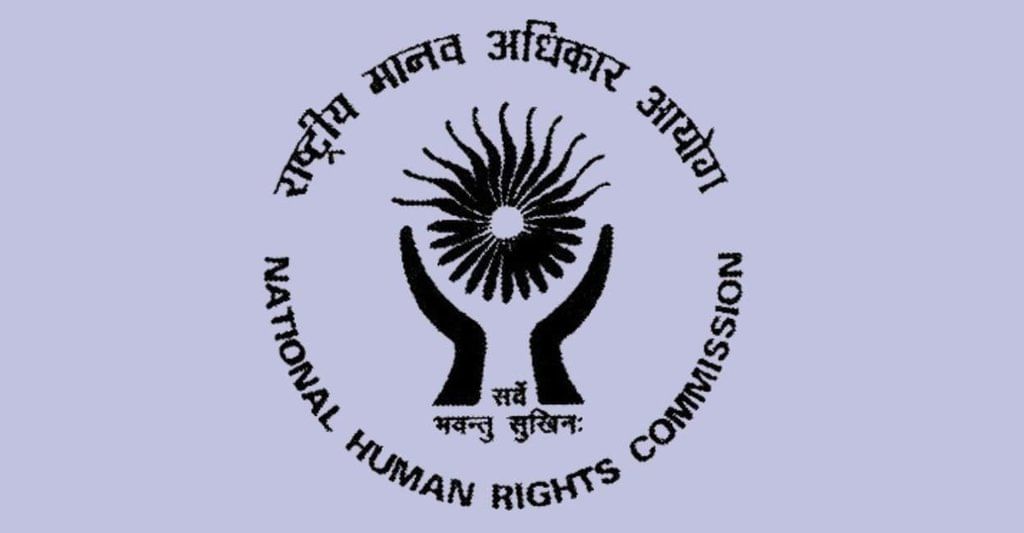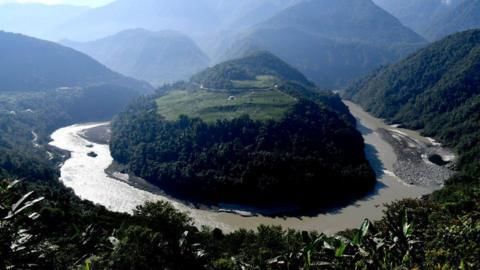UPSC Daily Current Affairs: 27th December 2024 | Current Affairs & Hindu Analysis: Daily, Weekly & Monthly PDF Download
GS3/Environment
Bald Eagle
Source: BBC
 Why in News?
Why in News?
The Bald Eagle was recently designated as the national bird of the United States after a long period of recognition, marking a significant moment in American culture and wildlife conservation.
- The Bald Eagle (Haliaeetus leucocephalus) is a prominent bird of prey indigenous to North America.
- This species is known for its solitary nature, typically gathering in groups only during the nesting season.
- Bald Eagles have been recognized for their striking appearance, featuring a dark brown body with a white head and tail.
Additional Details
- Appearance: The Bald Eagle's body and wings are predominantly dark brown, while its head and tail are striking white. The legs and feet are bright yellow, and the eyes are a light yellow color. Notably, male Bald Eagles are generally smaller than females.
- Habitat: This species thrives in proximity to large bodies of water, including sea coasts, coastal estuaries, as well as inland lakes and rivers.
- Reproduction: Bald Eagles exhibit a monogamous mating system, often forming lifelong pairs unless one of the partners dies.
- Distribution: These eagles have a range that extends from the Mexico border through the United States and Canada, being visible year-round in Alaska and along the East and West coasts, the Rocky Mountains, and the Mississippi River. Other regions of the United States typically see Bald Eagles only during the winter migration.
- Conservation Status: According to the IUCN, Bald Eagles are classified as "Least Concern," reflecting their stable population in many areas.
The Bald Eagle's official recognition as America's national bird symbolizes the nation's commitment to wildlife preservation and highlights the importance of this majestic species in American heritage.
GS3/Economy
Strengthening Fisheries Extension Services in India
Why in News?
The fisheries sector in India is vital due to its extensive aquatic resources, providing livelihoods for over 25 million individuals directly and many more indirectly along the value chain. As the third-largest fish-producing nation, India's fisheries extension services play a crucial role in enhancing productivity and sustainability in this sector.
- India is a leading player in global fisheries, contributing significantly to fish production.
- Fisheries extension services are essential for bridging the gap between scientific research and practical applications for fish farmers.
- Government initiatives, such as Matsya Seva Kendras, aim to improve fisheries services and sustainability.
Additional Details
- Importance of Fisheries Extension Services: These services facilitate knowledge transfer, capacity building, and promote sustainable practices among fish farmers.
- Key Government Initiatives: Initiatives like the Matsya Seva Kendras (MSKs) serve as one-stop centers for various fisheries-related services, including disease testing and training in sustainable practices.
- Challenges: The sector faces challenges such as fragmentation, limited digital literacy, and the impacts of climate change.
- Way Forward: Recommendations include enhancing institutional convergence, promoting digital outreach, and focusing on climate resilience to improve fisheries extension services.
In conclusion, strengthening fisheries extension services is critical for the sustainable growth of India's fisheries and aquaculture sectors. By integrating digital tools and fostering collaborations, India can empower fishers and fish farmers, ensuring they adopt sustainable practices that contribute to both economic and ecological well-being.
GS2/Governance
Pradhan Mantri Ayushman Bharat Health Infrastructure Mission (PM-ABHIM)
Source: Indian Express
Why in News?
The Delhi High Court has mandated that the Aam Aadmi Party government in Delhi must sign a Memorandum of Understanding (MoU) with the Ministry of Health and Family Welfare by January 5. This is crucial for the implementation of the Pradhan Mantri Ayushman Bharat Health Infrastructure Mission (PM-ABHIM), regardless of the Model Code of Conduct due to upcoming Assembly elections.
- PM-ABHIM is a Central government initiative aimed at enhancing public health infrastructure to better respond to future pandemics and health crises.
- The scheme has a financial outlay of Rs. 64,180 Crores for the period from 2021-22 to 2025-26.
- It focuses on strengthening health systems at primary, secondary, and tertiary levels.
- The mission aims to address critical gaps in health infrastructure, surveillance, and health research in both urban and rural areas.
Additional Details
- Components under Central Sector Components (CS):
- Establishment of 12 Central Institutions as training and mentoring sites with 150-bedded Critical Care Hospital Blocks (CCBs).
- Strengthening the National Centre for Disease Control (NCDC) along with 5 new Regional NCDCs and 20 metropolitan health surveillance units.
- Expansion of the Integrated Health Information Portal to connect all public health labs across States and Union Territories.
- Operationalization of 17 new Public Health Units and enhancement of 33 existing units at Points of Entry, including airports and seaports.
- Setting up of 15 Health Emergency Operation Centres and 2 mobile container-based hospitals.
- Creation of a national institution for One Health, along with 4 new National Institutes for Virology and 9 BioSafety Level III laboratories.
- Support for States/UTs under the CSS component:
- Construction of 17,788 rural Health and Wellness Centres (HWCs).
- Support for 11,024 urban Health and Wellness Centres, particularly in slum areas.
- Establishment of 3,382 Block Public Health Units (BPHUs) at block levels.
- Setting up Integrated Public Health Labs (IPHLs) in 730 districts.
- Creation of Critical Care Hospital Blocks (CCBs) in 602 districts with populations exceeding 5 lakhs.
The PM-ABHIM initiative is a significant step towards enhancing India's health infrastructure, ensuring that the country is better prepared for future health emergencies and pandemics.
GS2/Polity
Amendment to the Conduct of Election Rules
Source: Indian Express
Why in News?
The recent amendment to the Conduct of Election Rules, initiated by the Union Law Ministry following a recommendation from the Election Commission (EC), has restricted public access to certain electoral documents. This change is seen by many, including the Opposition and transparency advocates, as an infringement on the right to information and electoral transparency.
- The Conduct of Election Rules, 1961, outlines the procedures for conducting elections under the Representation of People Act.
- The amendment modifies Rule 93(2)(a), which previously allowed public inspection of all election-related papers.
Additional Details
- Rule Change: The amended rule now states that "all other papers as specified in these rules relating to the election shall be open to public inspection," effectively limiting access to certain electronic data.
- Context of Amendment: The amendment was prompted by a direction from the Punjab and Haryana High Court for the EC to disclose documents and CCTV footage related to the Haryana Assembly election, raising concerns over voter secrecy and data misuse.
- Opposition from Activists: Transparency advocates argue that this move undermines the Right to Information as it restricts access to important electoral documents, including reports from Election Observers and data on voter turnout.
- The amendment has sparked controversy, especially given recent debates on voter turnout and election fairness.
This amendment raises significant questions about the balance between electoral security and the public's right to information, especially in sensitive regions where the safety of voters may be at risk.
GS2/International Relations
United Nations Disengagement Observer Force (UNDOF)
Source: Indian Express
 Why in News?
Why in News?UN Secretary-General Antonio Guterres has honored Brigadier General Amitabh Jha from India, who was serving with the United Nations Disengagement Observer Force (UNDOF) in the Golan Heights. This recognition underscores the ongoing efforts of UN peacekeeping missions in maintaining international peace and security.
- UNDOF was established by UN Security Council Resolution 350 on May 31, 1974.
- The force's primary mandate is to oversee the ceasefire and supervise a demilitarized buffer zone between Israel and Syria.
- The mission's mandate is renewed every six months, extended until June 2025.
Additional Details
- Mandate: UNDOF is tasked with maintaining the ceasefire and supervising the area of separation, ensuring that both Israeli and Syrian troops adhere to the limitations set forth in the agreement.
- Funding: The operation of UNDOF is financed through a separate account that is approved annually by the UN General Assembly.
- Headquarters: The mission is based at Camp Faouar in Syria.
About Golan Heights
- The Golan Heights is a hilly region that overlooks the upper Jordan River valley to the west.
- This area has been occupied by Israel since 1967 and is internationally recognized as Syrian territory.
- Geographical borders include the Jordan River and Sea of Galilee to the west, Mount Hermon to the north, the seasonal Wadi Al-Ruqqād River to the east, and the Yarmouk River to the south.
Brigadier General Amitabh Jha's contributions to UN peacekeeping highlight the importance of international cooperation in conflict resolution and the maintenance of peace in sensitive regions such as the Golan Heights.
GS1/Indian Society
Domestic Migration in India
Source: Indian Express
Why in News?
The phenomenon of domestic migration in India has experienced a notable decline, with the total number of migrants decreasing by 11.78% from 2011 to 2023. A recent working paper by the Economic Advisory Council to the Prime Minister (EAC-PM), titled “400 Million Dreams!” discusses key trends, reasons for this decrease, and shifts in migration patterns.
- Significant reduction in the number of domestic migrants from 45.57 crore in 2011 to 40.20 crore in 2023.
- The migration rate has dropped from 37.64% in 2011 to 28.88% in 2023.
- Economic opportunities in smaller cities are improving, contributing to the slowdown in migration.
- Emerging recipient states include West Bengal and Rajasthan, replacing Andhra Pradesh and Bihar.
- Data collection challenges hinder a comprehensive understanding of migration trends.
Additional Details
- Meaning of Migration:Migration refers to the movement of people from their usual place of residence, which can be either internal (within the country) or international (across countries). This movement can be categorized into various types:
- Internal Migration: Movement within a country, such as rural-urban or inter-state migration.
- External Migration: Movement from one country to another.
- Forced Migration: Movement driven by external pressures such as war or natural disasters.
- Voluntary Migration: Movement chosen by individuals or families for better economic opportunities.
- Temporary Migration: Short-term migration for purposes like seasonal work.
- Permanently Migration: Long-term migration with the intention to settle.
- Reverse Migration: Individuals returning to their original place of residence after having migrated.
- Methodology Used by the EAC-PM:To estimate migration trends, the EAC-PM report utilized three datasets:
- Indian Railway Unreserved Ticketing System (UTS) for passenger volumes.
- TRAI mobile roaming data for seasonal movement analysis.
- District-level banking data for remittance studies.
The conclusions drawn from the EAC-PM paper highlight that the slowdown in domestic migration is indicative of economic growth and regional development within India. However, it also emphasizes the necessity for improved data collection methods to better inform policy formulation addressing the complexities of migration.
GS2/Polity
NHRC Action on Tribal Suicides in Kerala
Source: The Print
 Why in News?
Why in News?The National Human Rights Commission (NHRC) has taken suo motu cognizance of a concerning news report that highlights a significant increase in suicides among the tribal population in Kerala, particularly in the Peringammala Panchayat of Thiruvananthapuram district. The alarming statistics indicate that 23 suicides occurred in 2024 alone, following a total of 138 suicides in the region from 2011 to 2022.
- The NHRC's proactive approach to addressing the rise in tribal suicides in Kerala.
- Statistical data showcasing the severity of the issue over recent years.
Additional Details
- National Human Rights Commission (NHRC): Established on October 12, 1993, under the Protection of Human Rights Act, 1993, the NHRC is an independent statutory body responsible for safeguarding human rights in India, focusing on the rights related to life, liberty, equality, and dignity as guaranteed by the Constitution of India and international covenants.
- Composition: The NHRC consists of a chairperson (a retired Chief Justice of India or Supreme Court judge) and members including a sitting or retired Supreme Court judge, a Chief Justice of a High Court, and three human rights experts (with at least one being a woman). Ex-officio members include chairpersons of various national commissions.
- Appointment Process: Members are appointed by the President of India based on recommendations from a six-member committee led by the Prime Minister, which includes the Speaker of the Lok Sabha, Deputy Chairman of the Rajya Sabha, leaders of the opposition, and the Union Home Minister.
- Tenure: Members serve a term of 3 years or until the age of 70, whichever comes first, with the possibility of reappointment. Post-tenure, they are barred from seeking employment with the Central or State governments.
- Removal Process: Members can be removed on various grounds such as insolvency, misconduct, or incapacity, with inquiries conducted by the Supreme Court.
This situation emphasizes the urgent need for intervention and support for the tribal communities in Kerala, as well as the NHRC's role in addressing human rights issues effectively.
GS3/Environment
African Wild Cat (Leptailurus serval)
Source: The Hindu
 Why in News?
Why in News?The Border Security Force (BSF) has successfully rescued a Serval, the African wild cat (Leptailurus serval), from an alleged wildlife smuggling attempt along the India-Bangladesh border. This incident highlights ongoing issues related to wildlife trafficking and conservation efforts in the region.
- The African Wild Cat is a medium-sized wild cat known for its distinctive features and hunting abilities.
- It is currently classified as Least Concern on the IUCN Red List, but faces threats from habitat loss and illegal hunting.
Additional Details
- Scientific Name: Leptailurus serval
- Common Name: African Wild Cat, Serval
- Family: Felidae
- Physical Description: The Serval has a slim, long-legged body covered in a tawny coat with black spots and stripes. Notably, it can leap up to 3 meters (10 feet) vertically.
- Habitat: This species is primarily found in Sub-Saharan Africa, preferring habitats such as savannahs, grasslands, and wetlands while avoiding arid regions and dense forests.
- Diet: The Serval is carnivorous, feeding on small mammals, birds, reptiles, and insects. It utilizes its acute hearing to effectively hunt prey.
- Behavior: Servals are solitary and exhibit nocturnal or crepuscular behavior, communicating through vocalizations and scent-marking.
- Reproduction: They breed year-round, typically producing 2–3 kittens per litter, with a gestation period of 74 days.
- Conservation Status: The Serval is listed as Least Concern on the IUCN Red List and is included in Appendix II of CITES to regulate trade.
- Threats: Major threats include habitat loss, illegal hunting for fur, and conflicts with humans, particularly over poultry attacks.
The ongoing efforts to combat wildlife smuggling and ensure the protection of species like the African Wild Cat are crucial for maintaining biodiversity and ecological balance.
GS1/History & Culture
NATION MOURNS FORMER PM MANMOHAN SINGH
Source: The Hindu
Why in News?
Former Prime Minister Manmohan Singh, aged 92, has passed away. His health had been deteriorating over the past few months. Singh, who served as Prime Minister from 2004 to 2014 during the Congress-led United Progressive Alliance government, was a prominent figure in India's economic transformation.
- Manmohan Singh was the first Sikh Prime Minister of India.
- He played a crucial role in India's economic reforms starting in the early 1990s.
- His tenure saw significant social programs aimed at improving livelihoods and healthcare.
Additional Details
- Early Life and Academic Pursuits: Born on September 26, 1932, in Gah, Punjab (now in Pakistan), Singh was recognized for his academic achievements, earning a doctorate in economics from the University of Oxford after studying at the University of Cambridge.
- Architect of Economic Reforms: As Finance Minister from 1991 to 1996, Singh implemented crucial reforms during a severe balance of payments crisis, moving India from a state-controlled economy to a liberalized market. His policies included reducing trade barriers, attracting foreign investment, and deregulating markets, which laid the groundwork for future economic growth.
- Prime Ministerial Tenure (2004–2014): His administration was marked by robust GDP growth, poverty reduction, and the expansion of the middle class. Key initiatives during his leadership included the National Rural Employment Guarantee Act and the National Rural Health Mission.
- Notable Achievements:
- Right to Information (RTI) Act: Enacted in 2005, this legislation empowered citizens to request information from public authorities, enhancing transparency.
- National Food Security Act: Introduced in 2013, this act provided subsidized food grains to about two-thirds of India's population.
- US-India Civil Nuclear Agreement: Finalized in 2008, this deal ended India's nuclear isolation and facilitated access to nuclear technology for civilian purposes.
Manmohan Singh's legacy as an economist and a statesman is profound, having significantly influenced India's development trajectory during and after his tenure.
GS3/Environment
China to Build World’s Largest Hydropower Dam in Tibet
Source: BBC
 Why in News?
Why in News?China has recently approved the construction of the world's largest hydropower dam on the lower reaches of the Yarlung Zangbo River (known as Brahmaputra in India) located on the Tibetan plateau. This ambitious project is expected to generate approximately 300 billion kilowatt-hours (kWh) of electricity annually, significantly surpassing the capacity of the current largest dam, the Three Gorges Dam.
- The dam will be constructed in Medog County, Tibet Autonomous Region.
- It aims to support China’s renewable energy initiatives and carbon neutrality goals by 2060.
- The project is part of China's 14th Five-Year Plan (2021–2025) and aims to boost regional development.
Additional Details
- Course of the Brahmaputra: The river originates in Tibet as the Yarlung Tsangpo, flowing through India's Arunachal Pradesh and Assam before entering Bangladesh and draining into the Bay of Bengal.
- Scale of the Project: The dam is projected to have a capacity of up to 60 gigawatts, which is three times that of the Three Gorges Dam.
- The construction cost is estimated at $137 billion, which will generate about 20 billion yuan ($3 billion) annually for Tibet.
The construction of this dam raises significant concerns regarding water resources, ecological impacts, and geopolitical implications, especially for neighboring countries like India, which relies on the Brahmaputra for its agriculture and water supply.
Concerns and Implications
- Impact on Agriculture: The dam may retain silt essential for downstream agriculture, potentially harming soil fertility in India.
- Water Flow Management: Although China asserts it is a run-of-the-river project, experts warn it may reduce water flow downstream during dry seasons and exacerbate flooding during monsoons.
- Geopolitical Tensions: China's control over the river could lead to concerns about water being used as a geopolitical tool, as seen during previous conflicts.
- Seismological Risks: The construction in a seismically active region poses risks for downstream populations.
- Ecological Concerns: The dam could disrupt the delicate Himalayan ecosystem, affecting endangered species and exacerbating climate change effects.
India’s Response
- India has urged China to consider the interests of downstream countries.
- In response, India plans to develop a 10 GW hydropower project in the Dibang Valley, Arunachal Pradesh, to mitigate potential impacts.
- Data sharing on trans-border rivers remains essential for cooperative management of water resources.
In conclusion, while the dam represents a significant advancement in renewable energy, it also poses serious environmental, agricultural, and geopolitical challenges that require careful consideration and international dialogue.
|
44 videos|5271 docs|1113 tests
|
FAQs on UPSC Daily Current Affairs: 27th December 2024 - Current Affairs & Hindu Analysis: Daily, Weekly & Monthly
| 1. What are the key features of the Pradhan Mantri Ayushman Bharat Health Infrastructure Mission (PM-ABHIM)? |  |
| 2. How does the United Nations Disengagement Observer Force (UNDOF) contribute to peacekeeping? |  |
| 3. What measures are being taken to address domestic migration issues in India? |  |
| 4. What actions has the NHRC taken regarding tribal suicides in Kerala? |  |
| 5. What is the significance of the African Wild Cat in its ecosystem? |  |





















